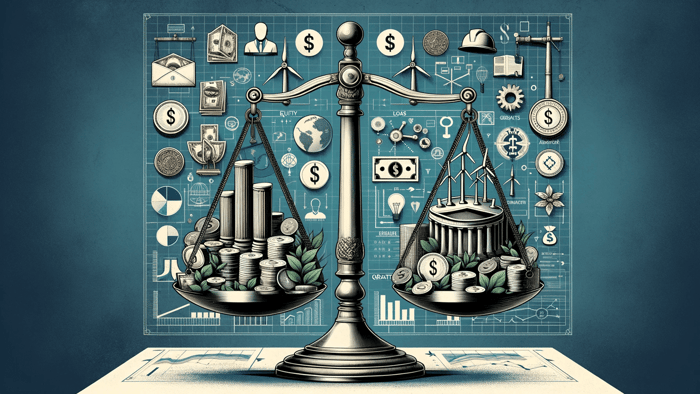What's the benefit of using a shareholder loan when financing a renewable energy project? It's simple - saving taxes! Learn how to properly integrate a shareholder loan into a financial model for renewable energy investments!
What is a shareholder loan?
A shareholder loan - also referred to as "SHL", is - strictly speaking - debt from an accounting perspective. However, the company's shareholders financing a project use their company's equity to give out the loan. So why not call it equity if the loan is financed with equity anyway?
A shareholder loan is a subordinate loan, meaning that the loan only gets repaid after all other liabilities are paid off. Typically, this subordination holds true not only for the principal of the SHL but also for the SHL interest charged.
Shareholder loan interest lowers the tax bill.
The major difference between a shareholder loan and pure equity in the form of share capital is the interest payment charged. The interest rate of the shareholder loan is most typically fixed over the entire tenor of the loan. Due to the subordination of an SHL, it is also reasonable to argue for a higher interest rate than the ones charged within the senior debt agreements - if any senior debt is raised. But before deciding how much SHL interest can be charged and how much overall SHL gearing is reasonable for a specific project, we strongly advise consulting a local tax advisor. Abusing a SHL structure will end up in trouble with the tax authorities. Typically a transfer pricing study from an independent third party is put in place before giving out the loan and defining its conditions.
Effect of interest payments within the income statement.
Interest payments from senior debt or shareholder loans reduce the earnings before tax (EBT) - and therefore the corporate taxes paid. Below you can see the effect of debt interest and SHL interest payments within an income statement of a project finance model for a large-scale solar plant.

Total interest payments for senior debt and the shareholder loan sum up to approximately 10 mEUR, of which 3.3 mEUR are charged from the SHL. If we assume a corporate income tax of 25%, the SPV of the project will save 0.25 x 3.3 = 0.83 mEUR. Saving almost one million EUR in taxes should underline the benefits of a shareholder loan.
The second benefit of an SHL: The vacuum effect.
Many jurisdictions restrict dividend payments if a company has negative retained earnings. Especially renewable energy projects often start with many years of negative retained earnings - mostly stemming from high depreciation & amortization charges in the income statement. This might lead to an absurd situation - the project might generate sufficient cashflows but is unprofitable from an accounting perspective. Depending on your jurisdiction, the company might not be allowed to pay dividends to its shareholders.
In this case, the company could end up with a full cash account but is legally not allowed to pay out any of it due to the negative retained earnings. Certainly, this would harm the IRR and cash distributions of the project.
However, a shareholder loan is at least a partial cure for this issue. Shareholders will receive both the principal repayment and the interest charged on the shareholder loan.
In a nutshell, a shareholder loan can improve the IRR of a project through tax savings and earlier receipts of cash in case a jurisdiction has dividend restrictions for negative retained earnings.
How to properly implement an SHL in a financial model for renewable energy investments?
Do you want to learn how to integrate a flexible shareholder loan structure within a financial model created explicitly for renewable energy investments? Then check out the Advanced Renewable Energy Financial Modeling course.





